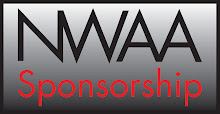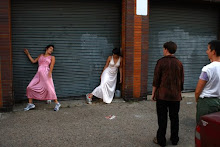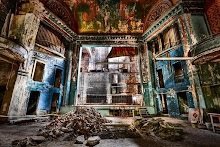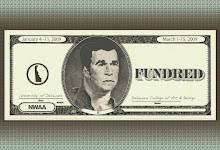
FABRICate: new sculpture by Jennifer Dillner and Ronald Longsdorf
Jennifer Dillner and Ronald Longsdorf create works from fabric and construction materials that propose viewer participation. These highly crafted sculptures explore notions of the body, fashion, construction, the home, memory, personal interactions, and psychology of objects. Both artists explore notions of architectural space, though in distinctively different modes. Dillner tends more towards spatial works that relate clothing assembly to building construction and invite audience interaction. Longsdorf, on the other hand, considers architecture as an incubative or womb-like space—that which insulates or protects.
Dillner notes that her work “has consistently been marked by [her] interest in both a relationship to the body and the exploration of architectural space.”1 Some of her sculptures more directly reference specifics of furniture and upholstery. With Furnished (2007), the tall, almost human-like form of the chair is clothed in its upholstery, wearing something reminiscent of a bathing suit. Dillner relates her response to clothing construction to a consistent interest in architectural forms—comparing pleats, for example, to wall structures.2 Other works, such as Lace Piece (2008), seem to reference the body—the spine—or utilitarian objects—such the train of a dress or a ladder—and perhaps pay unintentional homage to Claes Oldenburg’s soft sculptures from the 1960s. Portuguese Arachnid (2008) is a tall vinyl, organza, and steel sculpture that both dissuades and invites interaction. Its form is simultaneously biomorphic and referential to fashion, and offers a sort of protective space beneath its “body.” In this way the work serves as a sign or symbol for clothing and its relation to the human form. The physical space Dillner’s sculptures occupy is charged by the viewer’s interaction with the work and serves to illustrate one point where her interest in the body and structure meet. The dual nature of Portuguese Arachnid illustrates Dillner’s notions of hybridity or composites, “when an art object fits into another place and becomes something of a cyborg of a modern world.”
Longsdorf’s work seems firmly rooted in his exploration of self, place, and human interaction. His sculptures are mainly autobiographical—small-scale models of each home in which he has lived. Each is imbued with personal history, as with Home, Circa 1984 (2008), which is based on his childhood home designed and built by his father and uncle. The interior and exterior architectural details on the Tyvek® home wrap are a photo transfer of his uncle’s original plans and for Longsdorf, illustrate the multiple steps his works take away from reality. This physical distancing serves as a metaphor “to talk about a distance of personal connections.”3 The desire to enter these miniature works, and the inability to do so, perhaps hints at the sometimes-ultimate failure of communication or personal relationships, and maybe even at the desire and inability to return to one’s past. Longsdorf’s most recent installation, I Didn’t Realize I Was Here Until Now (2009), incorporates his current residence, a model for a future home, and other structures, with a projection of a porch constructed in his studio. This work illustrates both his interest in architecture and an awareness and acceptance of his place in Wilmington. Projection, for Longsdorf, enhances the theatricality of the viewer’s experience.4 By combining a projected image with an object, the work provides a contemplative space for the viewer, all the while reiterating the falsity or multi-layered removal from reality. As Longsdorf explains, the illusions compound upon themselves, ultimately reinforcing the imitative nature of art.
It is difficult not to consider art historical references found in both Dillner and Longsdorf’s work. Dillner’s soft forms and fabric construction recall both Eva Hesse’s soft resin and cloth forms and craft-focused women’s groups of the 1970s. The theatricality of Longsdorf’s sculptures and installations hint at early minimalist works, such as Tony Smith’s Die (1962/68), and the inherent viewer participation required to complete the aesthetic experience. The artist himself notes a relation to James Turrell’s light pieces and the meditative environment they create. Formal and aesthetic references to issues of feminism, women’s work, or domesticity are certainly interesting but are not the driving forces for either artist. While these references help to locate the work within its art historical context, they fall short in understanding the artists’ intentions. Both Dillner and Longsdorf maintain a truth to their materials—exploring fabric’s role as a protective shield or retaining the serial codes on pink Polystyrene insulation foam—and in this way perhaps complicate the traditional notions of artist, or sculptor, as maker. These objects are illustrative of that shift into postmodernism, when “sculpture reaches downward to absorb the pedestal into itself and away from actual place; and through the representation of its own materials or the process of its construction, the sculpture depicts its own autonomy.”5
—Margaret Winslow, Curator
1Jennifer M. Dillner, Artist Statement, 2008. [All subsequent quotes from Dillner are from her artist statement.]
2Diller, Conversation with artist, January 14, 2009.
3Ronald Longsdorf, Artist Statement, 2008.
4Longsdorf, Conversation with artist, February 1, 2009.
5Rosalind Krauss, “Sculpture in the Expanded Field,” October 8 (spring 1979): 34.





.jpg)










































